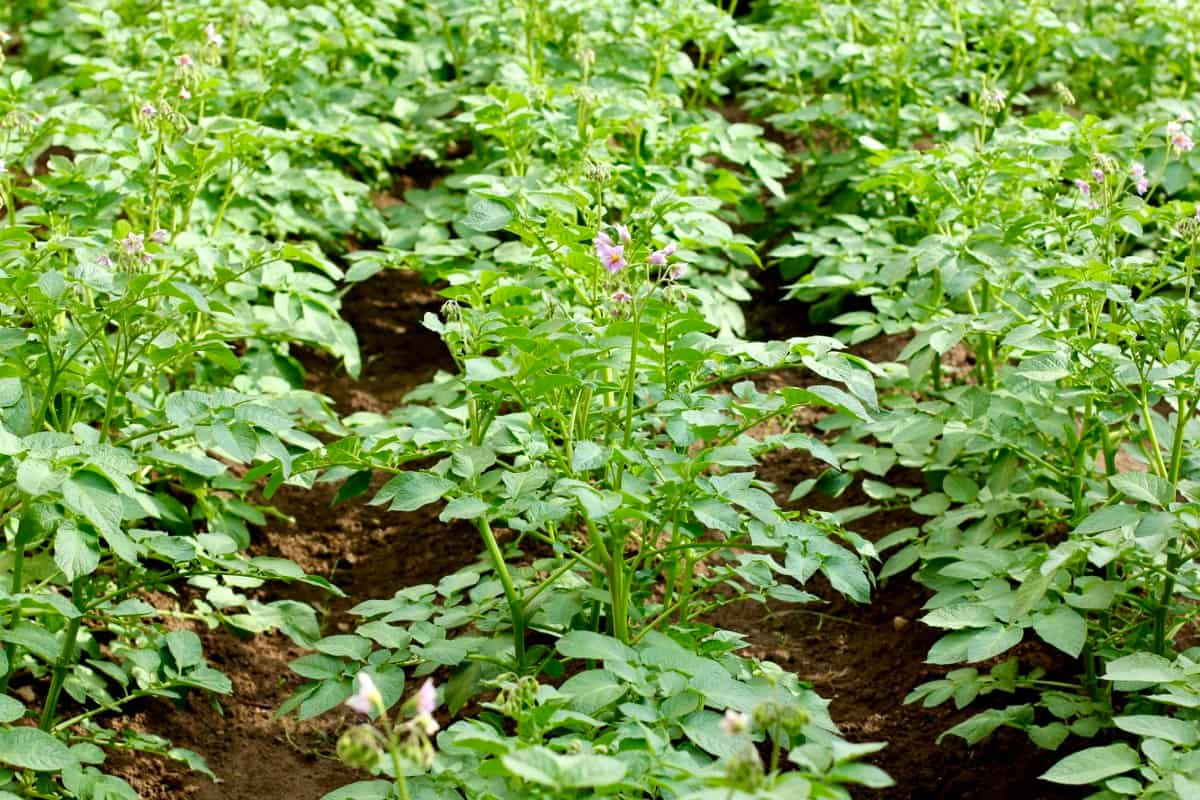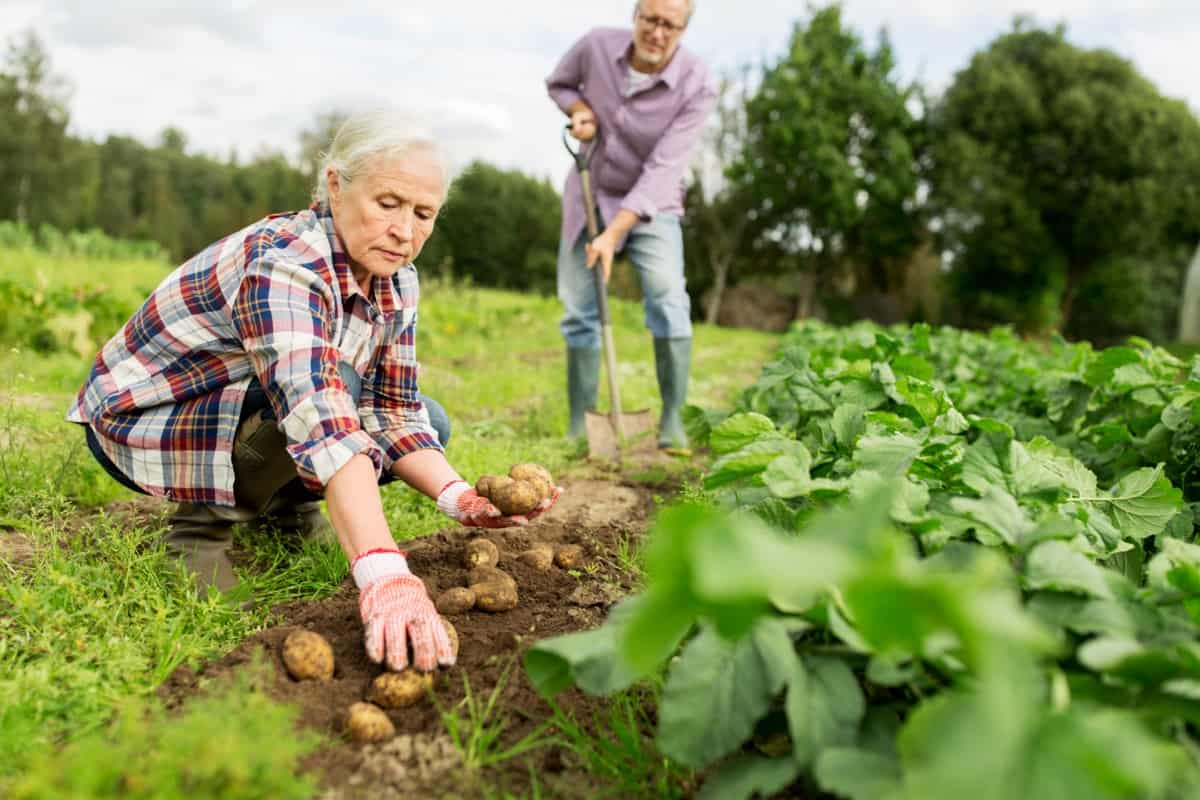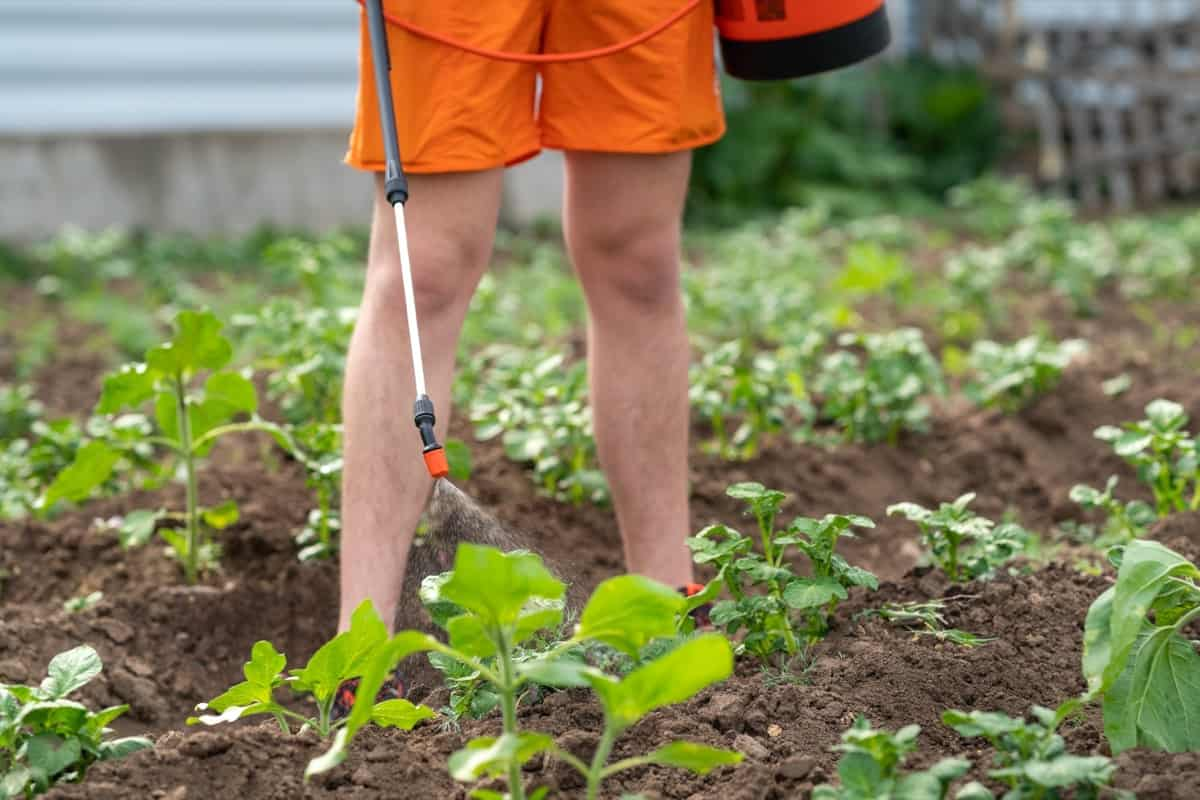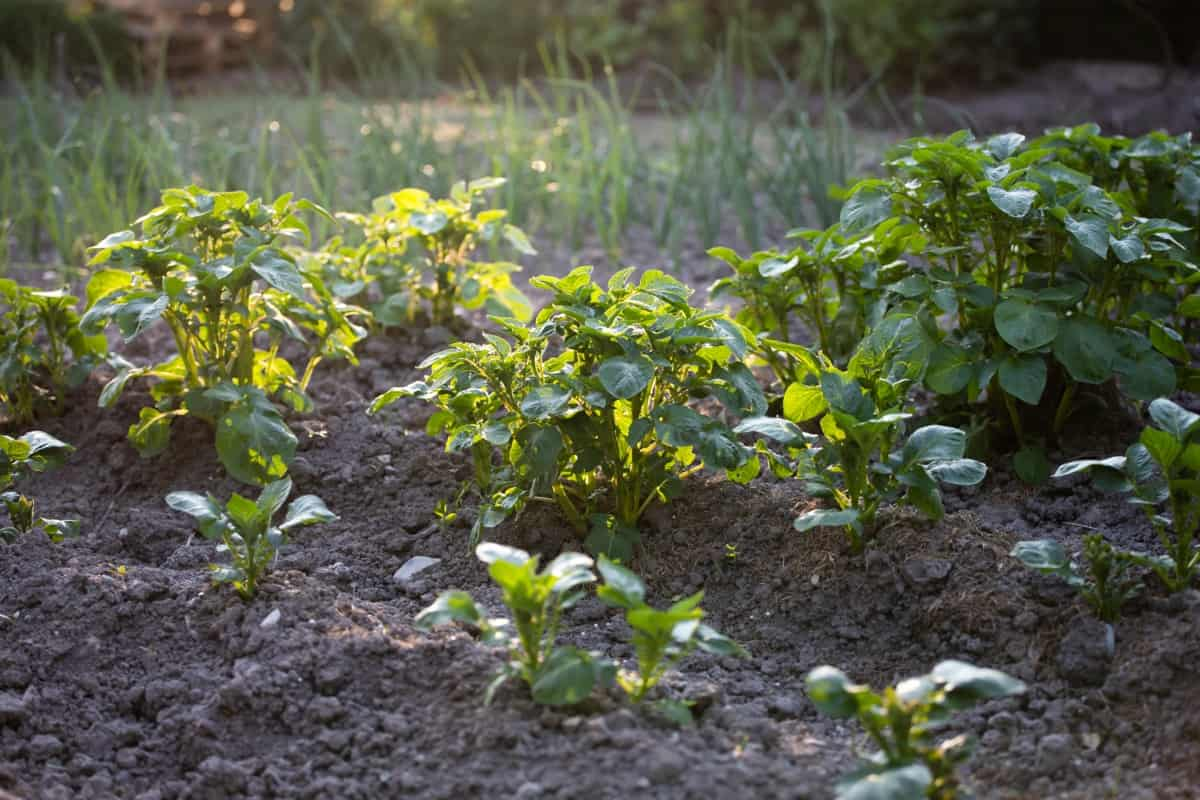Potatoes, a staple in most kitchens, are widely enjoyed for their versatility and ability to adapt to various cooking methods. However, potatoes have more to offer in gardening than just their culinary delights. They play a significant role in the balance of nature through a method known as companion planting.

This practice involves growing specific plants close together for mutual benefits. Companion plants for potatoes can deter pests, enhance pollination, and improve soil fertility, subsequently impacting potatoes’ growth and yield. However, knowing which plants make the best companions and which ones you should avoid planting next to potatoes is essential.
Benefits of Companion Plants for Potatoes in the Garden
Companion planting is a practice that dates back to indigenous cultures, which understood the delicate ecological balance and the benefits each plant brings to the garden. In the case of potato companion plants, their benefits are vast. Firstly, they enhance garden biodiversity by attracting beneficial insects and promoting soil health.
For instance, certain plants like beans fix nitrogen in the soil, which is highly beneficial for nutrient-hungry plants like potatoes. These companion plants can also shield potatoes from harsh weather conditions, provide shade, and even help with weed control. Therefore, considering what grows well with potatoes is essential for a successful harvest.
Best Companion Plants for Potatoes to Deter Pests
One significant advantage of companion planting for potatoes is pest control. In this respect, some of the best companion plants for potatoes include horseradish, marigold, and nasturtium. These plants have strong scents that deter various insects and pests, which can negatively impact the health and yield of potato plants. For instance, marigolds’ distinct smell repels nematodes and other soil-borne pests. On the other hand, horseradish is known to deter the Colorado potato beetle, one of the significant potato pests.
Potato Companion Plants for Improved Pollination
Improved pollination is another benefit of potato companion plants. Plants like borage and calendula, which attract bees and other pollinators, can boost the overall pollination in your garden. These pollinators ensure that all plants in the garden, including the potato plants, receive adequate pollination, which is crucial for their reproductive process. This can lead to more abundant and healthier yields.
In case you missed it: How to Pollinate Potato Flowers: Hand Pollination, Natural Pollination Methods, and Tips

Companion Plants for Potato in Containers
Growing potatoes in containers offers flexibility for gardeners with limited space. However, it’s important to note that not all plants make suitable companions in this setting. Basil, onions, and nasturtiums are examples of companion plants that can thrive in containers along with potatoes. Their compact growth habits and complementary benefits, such as pest control and flavor enhancement, make them ideal for this purpose.
Companion Herbs for Potatoes in Organic Gardening
In organic gardening, companion herbs for potatoes can play a pivotal role. Herbs like coriander, dill, and thyme have strong aromas that deter pests, enhancing the potato crop’s health and yield without chemical pesticides. Moreover, these herbs can be harvested alongside the potatoes and used in various dishes, adding a layer of flavor to your culinary endeavors.
Flowering Companion Plants for Potatoes to Attract Beneficial Insects
Beneficial insects are essential in a balanced garden ecosystem, helping with pest control and pollination. Flowering plants like yarrow and lavender are ideal potato companions because they attract these beneficial insects. These flowers provide a rich nectar source, attracting insects such as ladybugs, lacewings, and parasitic wasps that feed on common garden pests.
Companion Vegetables for Potatoes in Raised Beds
Raised beds provide an excellent environment for growing potatoes. They offer good drainage, easy pest control, and a comfortable working height. Companion vegetables for potatoes in raised beds include beans, corn, and cabbage. These plants have different growth habits and nutrient requirements that complement the potatoes, helping to maximize the use of space and nutrients in the raised bed.
In case you missed it: Natural and Organic Ways to Treat Potato Leaf Curl: Fix With Effective Home Remedies

Companion Plants for Potatoes to Improve Soil Fertility
The health and fertility of the soil significantly affect the growth and yield of your potato plants. Certain plants, like beans and other legumes, are excellent companions for potatoes as they help to improve soil fertility. Plants and bacteria work together, converting atmospheric nitrogen into a plant-friendly form, enriching the soil with this vital nutrient.
Companion Plants Chart for Potatoes in the Garden
Finally, to make the most out of your potato companion planting strategy, having a companion plants chart for potatoes in the garden can be beneficial. It provides a visual guide that details which plants grow well with potatoes and which ones to avoid. For instance, carrots, celery, and parsley are known to be good companions for potatoes, while crops like carrots, tomatoes, and raspberries should be avoided. This chart is a handy tool for planning your garden layout, ensuring that every plant, including your potatoes, gets the best possible growing conditions.
Optimizing Planting Layouts With Companion Plants for Potatoes
The step of arranging the layout of your garden with companion plants for potatoes can play a crucial role in maximizing the benefits of companion planting. It involves considering each companion plant’s growth habit, nutrient requirement, and pest-repellent properties while planning their placement among the potato plants. For instance, taller plants like corn can be placed strategically to shade potato plants in areas with intense sun exposure.
Companion herbs with strong scents can be interspersed among the potato plants to deter pests. In contrast, flowering plants can be positioned around the periphery to attract beneficial insects to the garden. At the same time, care should be taken to ensure that the companions do not compete with potatoes for nutrients or space. This step of thoughtful layout planning can enhance not just the health and yield of potatoes but also the garden’s overall productivity and aesthetic appeal.
In case you missed it: Container Growing Sweet Potatoes: Starting from Scratch for Planting to Harvest

Conclusion
Companion planting offers numerous benefits for your potato plants, from pest control to improved soil fertility. However, the choice of companion plants may vary based on various factors, including your local climate, soil type, and available space. Therefore, while this guide provides a comprehensive overview of potato companion plants, it’s always beneficial to do additional research and experiment with different combinations to find what works best in your garden.
- Feed Your Flock for Less: Top 10 Tips to Save on Chicken Feed
- Ultimate Guide to Ossabaw Island Hog: Breeding, Raising, Diet, and Care
- Hatching Answers: The Top 10 Reasons Your Chickens Aren’t Laying Eggs
- Eggs and Economics: Breaking Down the Cost of Raising Backyard Chickens
- Defend Your Greens: Proven Methods to Keep Iguanas Out of Your Garden
- Ultimate Guide to Cinnamon Queen Chicken: A Comprehensive Guide for Beginners
- Ultimate Guide to California Tan Chicken: Breeding, Raising, Diet, Egg-Production and Care
- Ultimate Guide to Marsh Daisy Chicken: Breeding, Raising, Diet, and Care
- 10 Types of Chicken Farming Businesses You Can Start for Profits